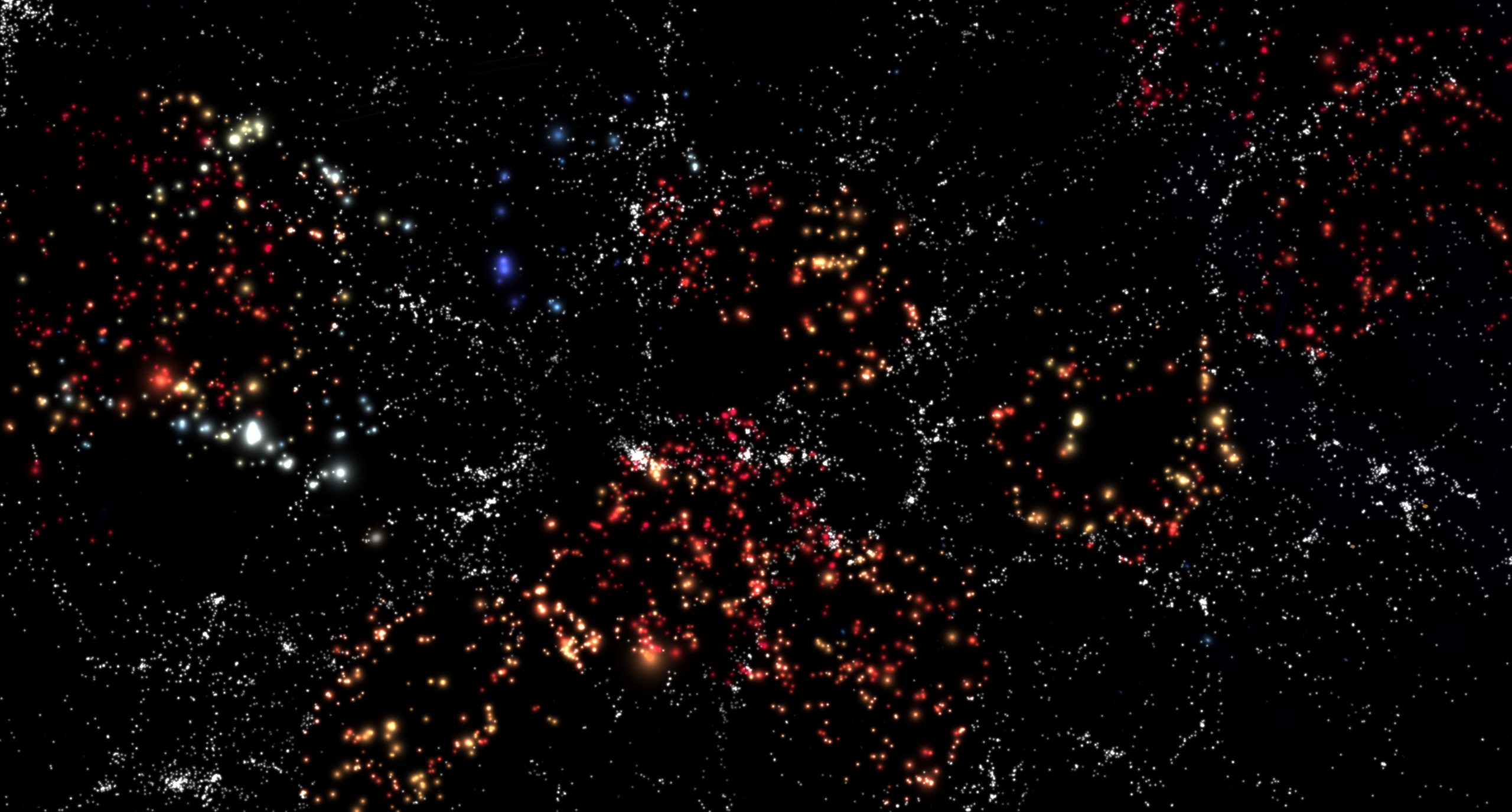The quiet life of galaxies in cosmic voids
Where do you think life is more peaceful? Here you have two options: i) in the middle of Madrid, surrounded by all the hustle and bustle of people commuting, shopping, or visiting; or ii) isolated in a monastery at the heart of the Alps. I do not think I need to answer the question, right? In this sense, it turns out that galaxies are not that dissimilar to us. A recent study published in Nature 1 and led by scientists from the University of Granada has shown that galaxies in voids (regions almost devoid of matter) assemble slower than galaxies in more dense environments such as clusters. But let’s tell the full story.
Matter in the Universe is not distributed randomly but follows a sponge-like distribution. That means that there are vast regions of the space (around 80% of the total volume of the Universe) that are almost empty of mass (only 10% of the total mass), whereas other regions are packed with matter (90% of the total mass occupies only 20% of the volume). And, given that mass groups together forming galaxies, we can classify the large scale structure of our Universe in clusters -regions of the space with a huge density of galaxies-; voids -where galaxies are sparsely distributed-; and filaments -regions with properties in between (see figure 1).

The authors of this article selected an unprecedented large sample with tens of thousands of galaxies in these three environments and analyzed spectroscopic information from the Sloan Digital Sky Survey (SDSS), a project gathering photometric and spectroscopic data of most of the sky visible from the Northern Hemisphere. This dataset, together with state-of-the-art analysis techniques, allowed the authors to study how each galaxy formed stars over its history. Previous studies focused on current properties, finding that galaxies in voids are bluer and less massive than those in filaments or clusters. However, this study would allow tracing possible differences back to the earliest stages of evolution of these systems.
Figure 2 shows two examples of what astronomers call “Star Formation Histories” (SFHs), i.e. the amount of stars that a galaxy formed at any given time, since its formation until now. They found that, regardless of the location of the galaxies, they exhibit two types of SFHs. Some galaxies formed most of their stars early in the Universe (magenta solid line, short timescale, ST), whereas others form stars more slowly (cyan dashed line, long timescale, LT). What is even more striking, is that, despite finding both behaviors in voids, filaments, and clusters; void galaxies on average assembled their mass slower than galaxies in filaments or in voids (see figure 3, left-hand panel). This means that the surroundings of a galaxy play a role in the way it forms stars: galaxies living in a peaceful neighbourhood form stars slower and over a more extended period of time than galaxies immersed in a busy environment.

When the authors divided their samples in two types depending on their SFH (ST or LT), they found another surprising turn of events. Only galaxies with LT-SFH display differences between voids, filaments, and clusters; galaxies with ST-SFH evolve the same way regardless of their surroundings (see right-hand panel of figure 3). How could this be possible? Easy. In the case of a ST galaxy, most of its mass was formed early in the history of our Universe. At this moment, one or two billion years after the Big Bang, all our Universe was more concentrated than now, occupying a much smaller volume (remember that we live in an expanding Universe). Thus, ST galaxies formed most of their stars in an environment similar to the current filamentary or cluster environments. In other words, so early in the Universe there was no significant distinction between void, filamentary, and cluster regions.

So yes, the location where galaxies live influences how they grow, just as human beings evolve differently when raised in the countryside or in the middle of a populated city. The implications of this discovery are far-reaching, but this is just the beginning. This work is framed within the CAVITY survey, a project led by the University of Granada in collaboration with the Calar Alto Observatory in Almería to unprecedentedly study galaxies in voids. So, stay tuned as the best is still to come!

References
- Domínguez-Gómez, J., Pérez, I., Ruiz-Lara, T. et al. Galaxies in voids assemble their stars slowly. Nature 619, 269–271 (2023). doi: 10.1038/s41586-023-06109-1 ↩